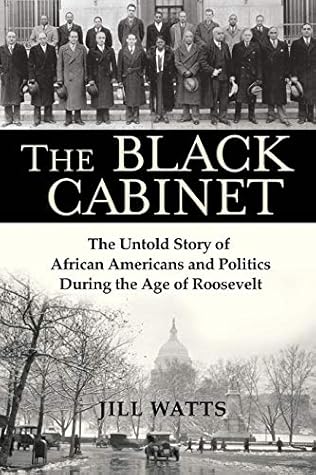Kindle Notes & Highlights
by
Jill Watts
Read between
July 7 - July 14, 2020
unemployment in many African American communities ran at 50 percent or higher, twice the national average.
between 1882 and 1940 more than three thousand African Americans had been lynched in the United States.
Robert Clifton Weaver had been the first African American to earn a PhD in economics from Harvard University; he worked for the Federal Housing Administration.
William H. Hastie had served as a solicitor in the Department of the Interior and was the first African American to hold a federal judgeship.
Al Smith was an alumnus of Howard University; he was an administrator in the Works Progress Administration and headed up the largest African ...
This highlight has been truncated due to consecutive passage length restrictions.
He was a Democrat, and historically the white South controlled his party.
that his reticence came because he feared that if he endorsed anti-lynching bills, white southerners would retaliate by dismantling the New Deal.
A version of the Gavagan bill eventually made its way through the House only to die in the Senate.
The president did not sanction the Black Cabinet; in fact, he never even acknowledged its existence. African American New Dealers had independently established the Black Cabinet.
Mary McLeod Bethune’s vision, the Black Cabinet was at the forefront of a radical remaking of the United States—one that had the potential to compel the nation to live up to its constitutional promise to extend equal rights to all Americans.
In 1907 and 1908, according to Tuskegee Institute, white lynch mobs took the lives of 147 African Americans.
“Today we enjoy a representation not dreamed of twenty-five years ago.”
Republican-dominated Congress that passed constitutional amendments guaranteeing the civil and voting rights of American citizens regardless of race.
African Americans. As the Republicans became the party of choice for African American voters, white southern Democrats, along with vigilante groups like the Ku Klux Klan, blocked black men from the polls.
Democratic leaders openly denounced the extension of voting rights
African Americans as ...
This highlight has been truncated due to consecutive passage length restrictions.
their
Democrats emerged as the party of segregation, disenfranchisement, and racial violence.
Black people had labored in slavery without wages for generations; now freedom came with no compensation and no reparations.
With no money, no homes, and no land, most black families were forced into sharecropping.
Ultimately sharecropping locked African Americans into an economic dependency
There was little time for children to be formally educated—and the schools that existed were few and grossly underfunded.
after emancipation, the majority of African Americans in the South had become trapped in the sharecropping system. It consigned generation after generation of African Americans to lives of perpetual destitution.
William McKinley, a Republican who won the White House in 1896, confirmed that African Americans would not have much of a political voice.
John C. Dancy, who was Wilmington’s collector of customs
On February 22, in the middle of the night, a mob of more than two hundred white men encircled his home, set it on fire, and then shot Baker and his family as they tried to escape. Baker died immediately.
Washington urged African Americans to accommodate segregation and disenfranchisement and instead concentrate on economic empowerment.
Tuskegee’s mission was to train black men in agriculture and manual arts, and black women in domestic science.
most African Americans serving in federal jobs in the capital, and many in other parts of the nation, came with Washington’s endorsement.
two major White House decisions dramatically eroded the president’s reputation with black Americans.
William H. Lewis as an assistant attorney general in the Justice Department.
that they get back to it. “Politically there is a dead
He sent Taft a report documenting and protesting numerous incidents of Jim Crowism throughout the federal government. Still the president offered no response.


